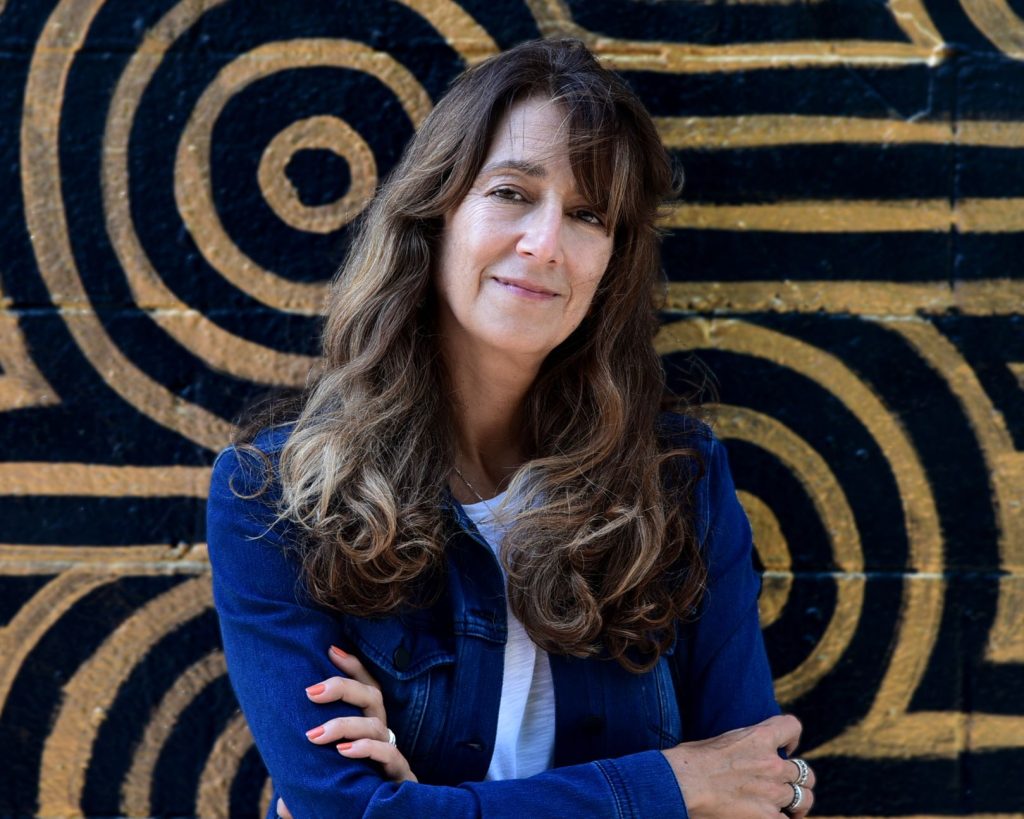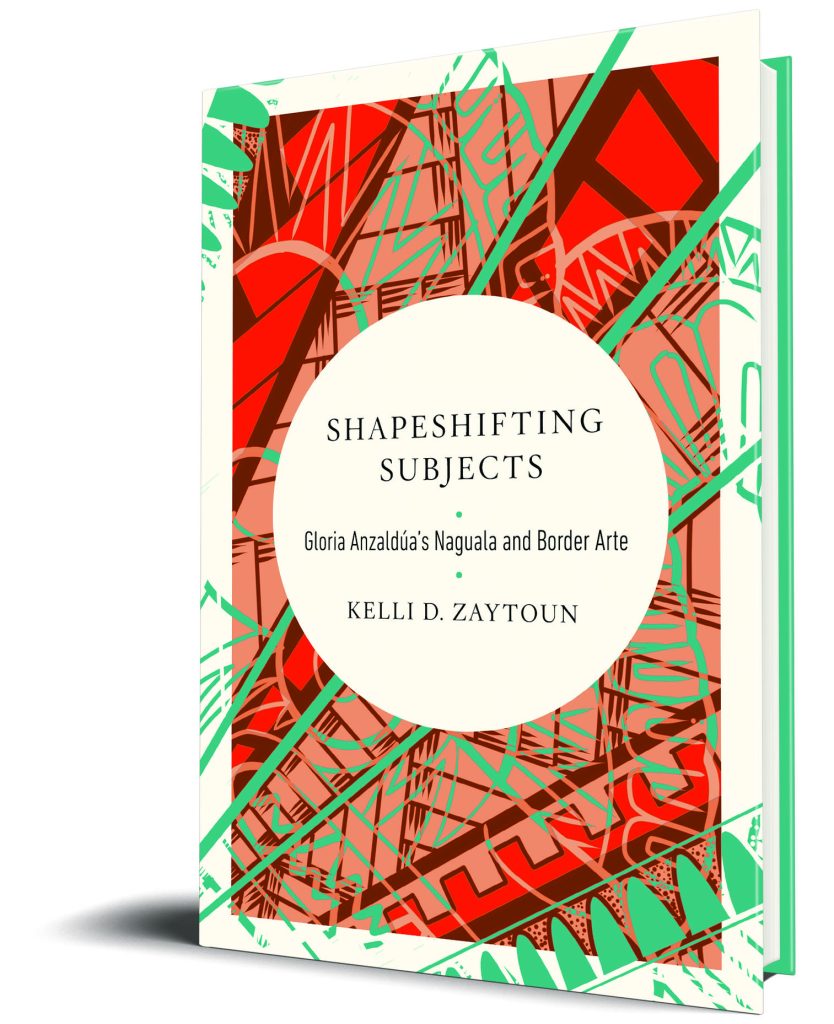Kelli D. Zaytoun, author of Shapeshifting Subjects: Gloria Anzaldúa’s Naguala and Border Arte, answers questions on why she decided to write this book and what media she consumes for fun.
Q: Why did you decide to write this book?
I met Gloria Anzaldúa in 2000 when she led a class and gave a talk at Miami University where I was working on my PhD. Looking back, I see how that moment determined my academic trajectory and the decision to write this book. I had just read Anzaldúa’s most well-known work, Borderlands/Frontera: The New Mestiza, and was fascinated by how my classmates and I were moved by her writing, which is simultaneously intellectual and sensual as well as personal and political. Anzaldúa’s interest in our experiences as students, not just academic, but also our health, our dreams, and ultimate goals in life, surprised and stayed with me. I realized then that she was a writer and activist who took into consideration a wider realm of experience than most of us do, trusting intuition and a deep connection to environmental and spiritual forces to guide her as she worked and lived her life. As I read more, I noticed an undertheorized concept across her writing that I wanted to explore, the trope of the shapeshifter, which in my analysis turns out to be much more than a metaphor. Anzaldúa’s shapeshifter, as fictional character and as a means for thinking about how interconnected we are to each other and our surroundings, offers innovative ways to enact relationships, healing, writing and other art forms, coalition politics, and more. I wrote the book to call attention to this contribution but also to help to elevate the role of art in positive personal and social change, particularly the role of storytelling and writing as political, decolonial, and transformative acts.
Q: Who were your biggest influences?
Anzaldúa of course, was my biggest influence, but also AnaLouise Keating, whose concept of post-oppositional politics helped to frame my analysis. I was inspired by Keating’s vision for this series and wrote the proposal with the series in mind. Philosophers Mariana Ortega and María Lugones also have influenced my thinking for a long time as has Suzanne Bost. Indigenous scholars like Patrisia Gonzales informed how I read Anzaldúa’s work as a healing ritual, a pattern I would have missed otherwise. Arab American and Arab Canadian academics like Carol Fadda, Amira Jarmakani, Joe Kadi, Therese Saliba, and Evelyn Shakir were critical to parts of this project too. I also was inspired a lot by adrienne maree brown’s ideas about social justice and her innovative style and sense of optimism. Eli Clare, too, for similar reasons. His Brilliant Imperfection, which blends memoir, critical analysis, and history, is similar to Anzaldúa’s writing in poignancy and originality. Both brown and Clare, like Anzaldúa, praise the imagination’s power to shift understandings of repressed histories and knowledges, and free repressed voices and desires.
Q: What is the most interesting discovery you made while researching and writing your book?
The most interesting discovery I made while writing this book it that books can take on a life of their own. As writers we are influenced by what’s going on around us. I wrote most of this book in 2020, the first year of the pandemic and the year that the Black Lives Matter movement went into a full swing. The world was simultaneously experiencing a major health crisis and a major social crisis, so my book ended up focusing on trauma and healing, and the role of writing and art in the healing process, much more than I expected it would. People necessarily became very creative during that time, making masks, making signs and speeches. I began to see it all as art, art that speaks from a place of trauma. I am glad about this outcome, and although it was a very difficult time, I believe I was able to focus on a core aspect of Anzaldúa’s work and my own, the relationship between wounds/trauma/healing and change. As far as Anzaldúa’s work is concerned, the most interesting discovery I made was to see a pattern – in form and content – in much of her writing that indicates a healing ritual or shapeshifting journey, one that includes her readers, from crisis and fragmentation to integration, justice, and healing. I think this work with story is radically powerful and decolonial, resisting lines between the material and the spiritual, self and other, and personal and political.
Q: What myths do you hope your book will dispel or what do you hope your book will help readers unlearn?

This is an interesting question! I hope my book will be embraced as one that crosses disciplinary interests and is accessible to many different types of readers, so I hope to dispel the idea that academic books can’t be legible to many audiences. I also hope to dispel the belief that the imaginary is not “real,” as the imagination and subsequent imaginaries, or creative ideas that shape us, hold great power to influence the conditions of our lives, large and small.
Q: What is the most important idea you hope readers will take away from your book?
My book is ultimately about storytelling and tellers: the limits, even dangers, but also benefits and lifesaving and even world changing power in a story. Chimamanda Adiche reminds us that “there is never a single story about any place” or people. So, I am looking to bring attention to writers uniquely positioned in-between cultures, like Anzaldúa, who write not to represent a swath of people but to articulate a particular intersectional experience at a specific moment in time, writers who blend influences, from their past and their current times and locations in which they do their work. Anzaldúa called this border arte. Border artists teach us how creativity and imagination can project visions of thriving futures for a variety of people and the environment with which we are intertwined. From testimonies and memoir to post-apocalyptic fiction – or stories that show us “hard futures” as Adrienne maree brown says – it’s our imaginations that shape narratives that pave paths for social justice. And in the process of shaping change, we have to change shape ourselves. It’s a back and forth, a cyclical movement, as Gloria Anzaldúa says, of “public acts” and “inner work.” Anzaldúa believed that ideas begin with an image and took seriously her journeys into the imagination. Her writing was her attempt to communicate the messages she learned on those journeys.
Q: What do you like to read/watch/or listen to for fun?
In my free time, I tend to read a variety of philosophical fiction from Clarice Lispector to David Foster Wallace, writing that plays with interiority and subjectivity. I have some favorite authors and pick up whatever they publish, like Diana Abu-Jaber, Louise Erdrich, Ruth Ozeke, and Zadie Smith. Right now I’m reading a novel by my friend Rebecca Kuder called The Eight Mile Suspended Carnival about a young woman with no memory or name but who can see other peoples’ memories. Anything that’s wildly imaginative, I love.

